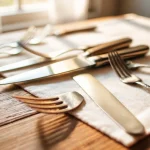Step-by-step guide to making traditional Cornish pasties
Crafting a traditional Cornish pasty requires attention to detail at every stage. Begin by gathering essential equipment such as a sturdy mixing bowl, rolling pin, pastry brush, and baking tray. Ingredients must be fresh: flour and beef for the base, alongside diced potato, swede, and onion to create the authentic Cornish pasty filling.
Start by preparing the pastry dough, ensuring it’s rolled to an even thickness of about 3-4mm. This thickness helps achieve the classic flaky texture. Next, distribute the filling evenly on each pastry circle, taking care not to overfill—overstuffing can cause leaks during baking. The crimping technique is crucial; carefully pinch the edges to form the traditional curved seal that both looks iconic and secures the filling.
In the same genre : How can you create a modern twist on the classic Cornish pasty?
Once assembled, brushing the pasties with a light egg wash aids in forming a golden, crisp crust. Following this step-by-step guide preserves the authentic Cornish pasty texture and flavour, making the baking process manageable and rewarding for homemade Cornish pasty enthusiasts.
Mastering shortcrust pastry for Cornish pasties
Achieving the perfect shortcrust pastry is fundamental to a traditional Cornish pasty. The choice of ingredients profoundly affects texture. For the best Cornish pasty dough, use plain (all-purpose) flour combined with cold, unsalted butter or beef dripping. This fat choice creates a tender, flaky crust.
Topic to read : Craftsmanship at its finest: artisanal cutlery unveiled
The pastry technique involves mixing the flour and fat until the mixture resembles coarse breadcrumbs. Avoid overworking the dough to prevent toughness. After incorporating cold water, gently knead just until it holds together. Resting the dough in the fridge for at least 30 minutes is crucial—it relaxes gluten and reduces shrinkage during baking.
When rolling out, aim for an even thickness of about 3-4mm. This allows for a crisp, sturdy pastry that holds the filling without collapsing. Rolling on a lightly floured surface prevents sticking. Be cautious not to roll the pastry too thin, as it may tear, nor too thick, which can result in a doughy texture. Mastering this homemade pastry technique ensures a crisp, flaky crust that complements the traditional Cornish pasty filling perfectly.
Preparing the classic Cornish pasty filling
To achieve an authentic Cornish pasty filling, selecting traditional ingredients is essential. The filling must include lean beef skirt or chuck, diced uniformly along with potato, swede (also known as turnip), and onions. This homely combination balances texture and flavor.
Cutting the vegetables and beef into consistent sizes—about 1 to 1.5 cm cubes—ensures even cooking inside the pasty. Uneven pieces risk some ingredients overcooking or remaining underdone. The beef should be fresh and trimmed of excess fat to avoid greasiness that impacts the pasty’s texture.
Seasoning the filling lightly with salt and black pepper enhances the natural taste without overpowering. Many traditional recipes avoid strong spices to preserve the classic flavor profile. The balance of moisture in the filling is critical; too wet, and the pastry sogs; too dry, and it loses juiciness. Using vegetables with higher water content calls for careful draining or slight reduction to keep the pasty filling perfectly moist.
This careful preparation of the beef and vegetable filling is the foundation for the well-loved, authentic Cornish pasty recipe.
Assembling and crimping Cornish pasties
Careful pasty assembly ensures each homemade Cornish pasty holds its filling perfectly while maintaining its iconic shape. Start by placing the prepared beef and vegetable filling evenly on rolled-out pastry circles. It’s vital not to overfill; even distribution prevents tearing or leaking during baking.
Next comes the crimping technique, a hallmark of the traditional Cornish pasty. Fold the pastry over the filling, aligning edges precisely. Using thumb and forefinger, pinch the edge firmly from one end to the other, forming a curved seal characteristic of the authentic pasty shape. This crimping not only creates the signature look but provides structural integrity to keep juices inside.
To avoid common pitfalls like gaps or weak seals that cause leaks, ensure the pastry edge is free of moisture before crimping. Lightly brushing with water can help the pastry edges stick better if needed. Proper assembly and crimping protect the filling’s moisture while baking and guarantee the traditional Cornish pasty texture and flavour remain intact. Mastering this step completes the process started in preparation and pastry-making for a truly authentic pasty experience.
Baking Cornish pasties to perfection
Baking Cornish pasties correctly is crucial to achieving the classic golden crust and succulent filling that define a traditional Cornish pasty. Preheat your oven to around 200°C (390°F) for optimal results. This temperature allows the pastry to cook evenly and develop a beautiful, crisp exterior.
Place the assembled pasties on a baking tray lined with parchment paper, ensuring they have space to expand slightly without touching. Bake for 45-50 minutes, or until the crust turns a rich golden brown. Keep an eye on the pasties—overbaking risks drying out the filling, while underbaking leaves the pastry doughy and the meat undercooked.
To ensure doneness, check the internal temperature of the beef and vegetable filling reaches at least 75°C (167°F). Avoid opening the oven too frequently as heat loss can affect even cooking. A correctly baked Cornish pasty boasts a tender, juicy filling sealed inside a crisp, flaky crust, completing your homemade Cornish pasty with traditional flavour intact.
Step-by-step guide to making traditional Cornish pasties
Creating a traditional Cornish pasty begins with assembling essential equipment: a mixing bowl, rolling pin, pastry brush, and baking tray. Use fresh ingredients for authenticity—plain flour for the dough and a filling of lean beef, potato, swede, and onion diced evenly. This foundation is crucial in the Cornish pasty recipe.
Start by preparing homemade Cornish pasty dough, rolling it to about 3-4mm thickness for that ideal flaky texture. Spread the filling evenly, avoiding overfilling which can cause leaks. Next, fold and crimp the edges carefully using the classic curved seal method to secure the contents and achieve the iconic look.
A light egg wash brushed on the surface enhances browning during baking, producing the coveted golden crust. This step-by-step guide highlights key tips such as proper filling balance and crimping precision to achieve the traditional texture and flavour that define a genuine Cornish pasty experience.
Step-by-step guide to making traditional Cornish pasties
Creating a traditional Cornish pasty begins with gathering the right equipment and fresh ingredients. Essential tools include a mixing bowl, rolling pin, pastry brush, and baking tray. For authentic results, use plain flour for the dough and lean beef combined with diced potato, swede, and onion for the filling. This foundational setup supports a well-executed homemade Cornish pasty.
The process starts by preparing Cornish pasty dough, rolled out evenly to about 3-4mm thickness to ensure a flaky texture. Spread the filling carefully, keeping it balanced to avoid overfilling, which can cause leaks. Folding the pastry over the filling requires precision; the signature curved crimp seals the pasty securely, locking in the juices.
Before baking, lightly brush the pastry with an egg wash to develop a golden crust. This step-by-step guide emphasizes crucial tips like proper filling balance and crimping technique, ensuring that your traditional Cornish pasty captures the classic flavour and texture true to the Cornish pasty recipe.








